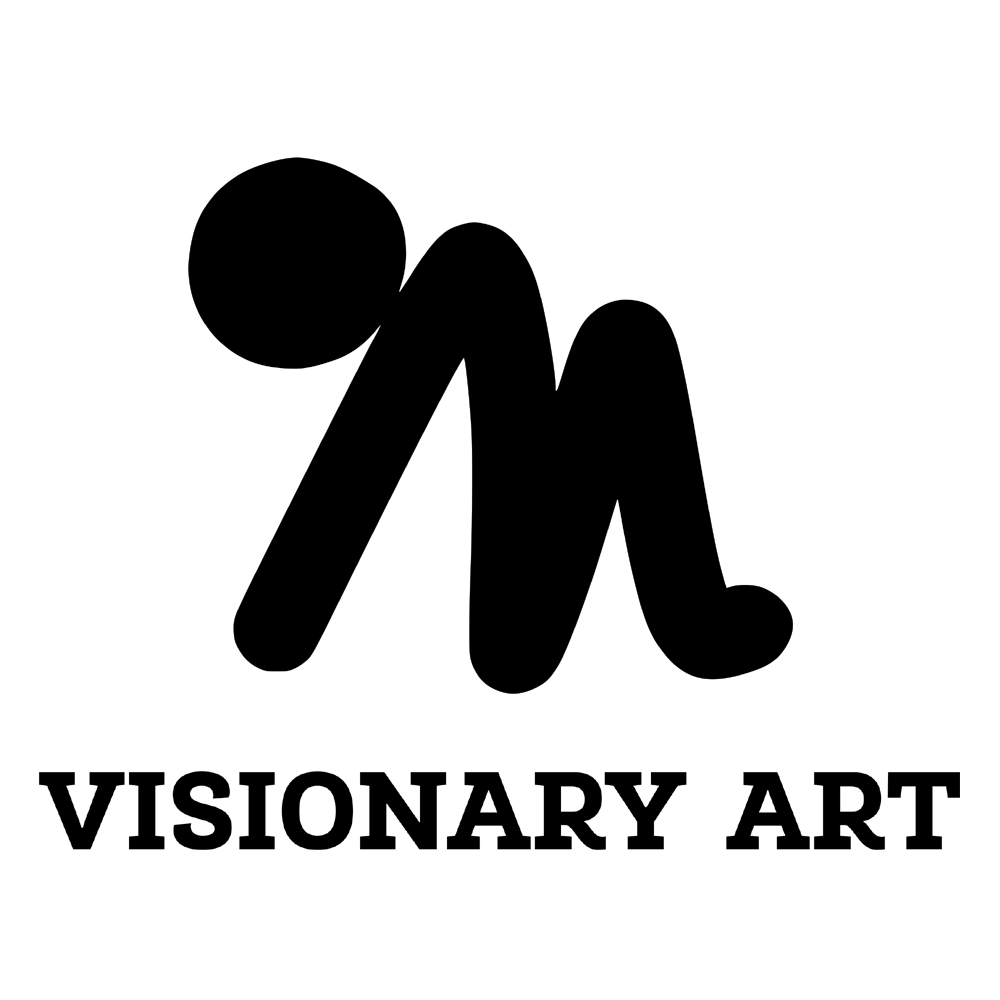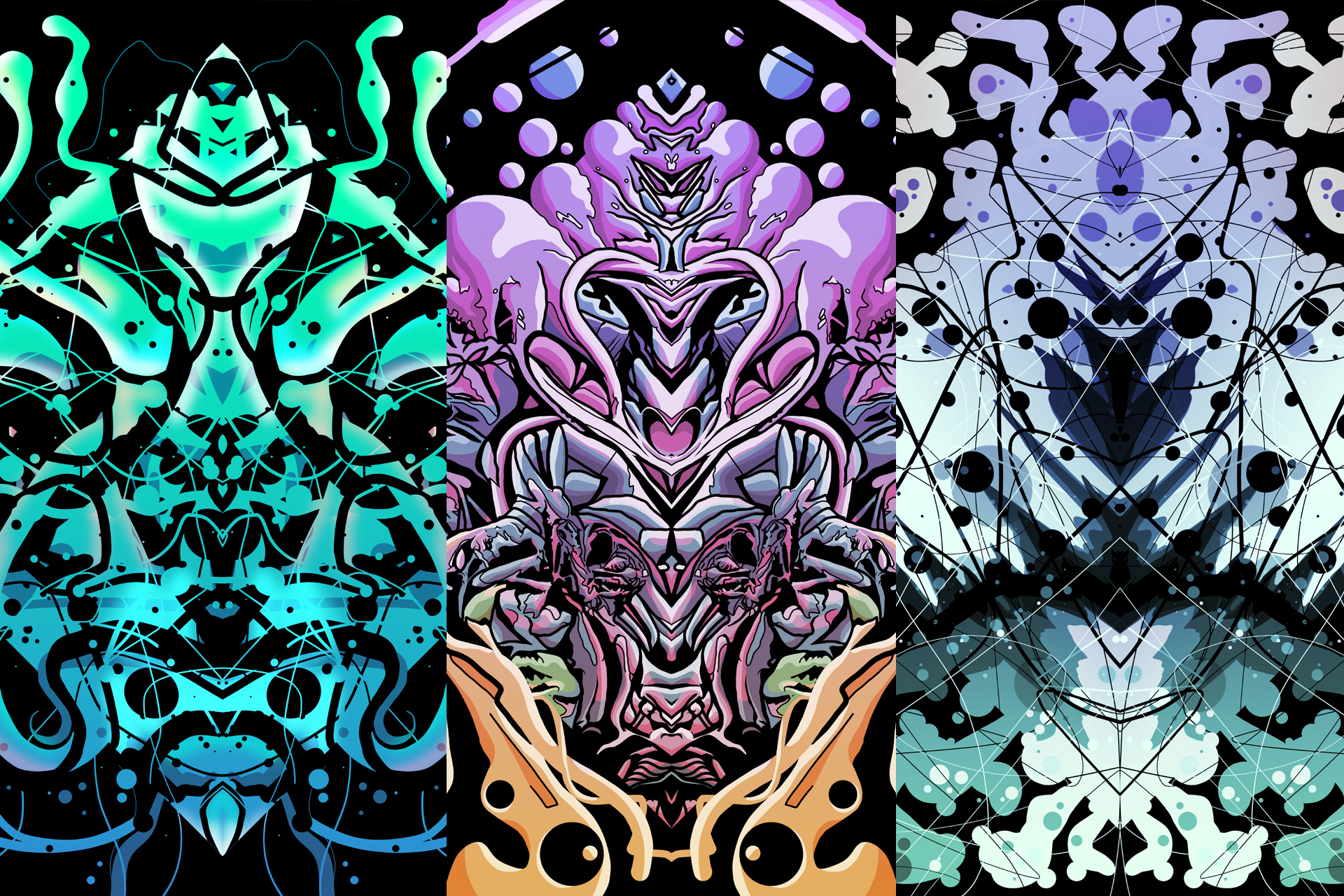Pareidolia is a phenomenon that occurs when the brain interprets random or ambiguous stimuli as recognizable objects or patterns. It’s the reason we may see a face in a cloud or an animal in tree bark. As an abstract artist, I’m fascinated by the way the brain processes and interprets visual information, and incorporating pareidolia into my work adds an extra layer of depth and meaning.
I first encountered pareidolia as a child, spending hours finding shapes and figures in the clouds. Then again in high school psychology class, where I learned about the Rorschach test. Later, as I studied art more seriously, I became interested in using pareidolia in my own work to engage the viewer on a deeper level.
The Role of the Brain in Pareidolia
The brain plays a crucial role in pareidolia. When we look at a visual image, the brain tries to make sense of it and find patterns or connections through pattern recognition. Pareidolia occurs when the brain takes this process a step further, interpreting random or ambiguous stimuli as something familiar.
There is a psychological basis for pareidolia as well. Many experts believe it’s a way for the brain to fill in gaps in our knowledge or understanding, or to make sense of something that doesn’t fit our preconceived notions. It allows the brain to create meaning from chaos and is something we’re all prone to experiencing to some degree.
Using Pareidolia in Abstract Art
Many artists have used this tendency of the human brain to see patterns where none exist as a source of inspiration for their work. For example, some artists have incorporated elements that play on pareidolia into their artwork to create a sense of disorientation and visual trickery for the viewer. Other artists have used pareidolia to explore themes of perception and the unconscious mind in their work. By incorporating elements of pareidolia into their artwork, these artists are able to tap into the viewer’s innate desire to find meaning and pattern in the world and challenge their perceptions of reality.
- M.C. Escher: The Dutch artist is known for his mathematically inspired artwork, which often incorporates optical illusions and plays with the viewer’s perception of space and perspective. Escher’s drawing “Relativity,” for example, features a series of interconnected staircases that seem to defy gravity, creating a sense of pareidolia for the viewer.
- Victor Moscoso: The American artist was a pioneer of the psychedelic art movement of the 1960s and was known for his use of vibrant colors and patterns in his artwork. Moscoso’s posters and album covers often incorporated elements of pareidolia, such as distorted lettering to create a sense of disorientation and visual trickery for the viewer.
- Alex Grey: The American artist is known for his detailed and surrealistic paintings that explore the human form and the connections between the physical and spiritual world. Grey’s artwork often incorporates elements of pareidolia, such as faces and abstract patterns.
- H.R. Giger: The Swiss artist was known for his dark and surreal artwork, which often featured distorted and abstract forms that evoked a sense of pareidolia. Giger’s design work, particularly his designs for the Alien movie franchise, are a good example of this, as they feature creatures with twisted and otherworldly forms that challenge the viewer’s perception of reality.
- Willem de Kooning: The Dutch-American abstract expressionist painter was known for his gestural and expressive brushwork. De Kooning often incorporated elements of pareidolia into his paintings by using ambiguous and distorted forms, which suggest recognizable shapes but do not fully resolve into recognizable objects. For example, his painting “Woman I” features a series of twisted and abstract forms that suggest a figure, but the figure is not fully resolved or clearly defined. By using elements of pareidolia in this way, de Kooning was able to create a sense of visual tension and ambiguity in his paintings.
I’ve personally incorporated pareidolia into my own abstract art in a couple ways. I often use circles, dots, or marks that resemble eyes. I use vertical center line symmetry to create familiar, bilaterally symmetrical organic forms. I also work with radial symmetries to similar effect. This results in subtle hints of recognizable shapes or patterns for the brain to interpret. The process of interpretation and personal connection is an important aspect of my art.
Incorporating pareidolia into abstract art can be powerful, adding mystery and intrigue. It also allows for multiple interpretations as different people will see different things in the same piece. This is one of my favorite aspects of using pareidolia – it encourages the viewer to bring their own experiences and perspectives to the piece and find meaning in their own way.
Conclusion
In conclusion, pareidolia is a fascinating aspect of the human brain that adds depth and meaning to abstract art. By incorporating subtle hints of recognizable forms or patterns, artists can encourage the viewer to engage with the piece and find their own meaning. Whether through symmetry, shapes, or playing with expectations, pareidolia is a powerful tool for creating meaningful and impactful abstract art.

